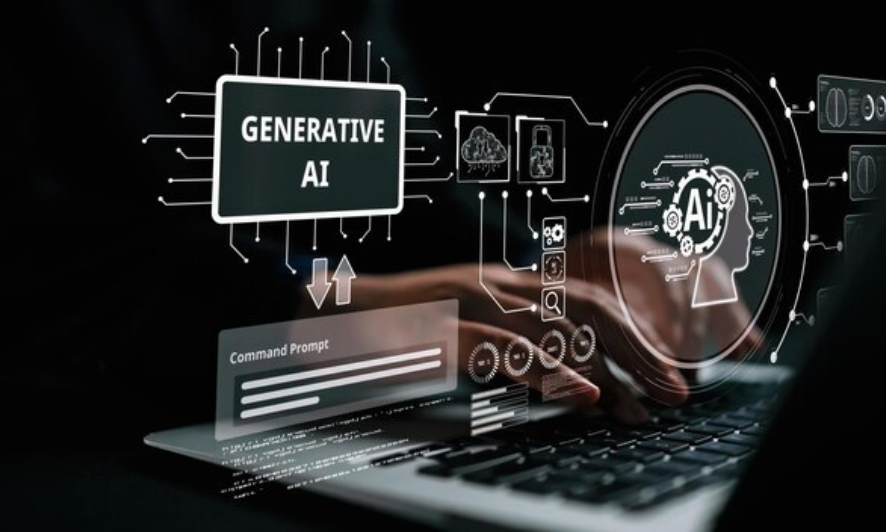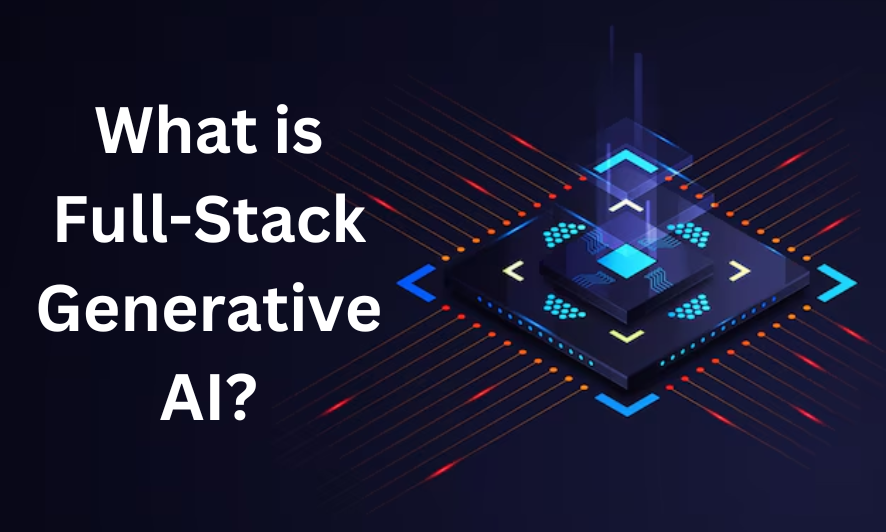What is Full-Stack Generative AI?
Full-stack generative AI is the new buzzword in industries since it changes the way organizations develop and deliver content, automate tasks, and even solve various problems.
However, full-stack generative AI has brought this innovation to the next level by promising the development and implementation of AI systems that would revolutionize development and implementation.
What is generative AI? How does full-stack generative AI work? What’s the role of developers in this space? Are there opportunities? Like MyGradez, the online learning platform that offers courses and certifications in IT?
This essentially outlines a system and a model that, based on its learned patterns, generates new or original content and data.
Generative AI, in comparison to traditional AI models that were designing algorithms for classification and regression, creates such outputs as text, images, music, or even code.
Some examples of generative AI include the GPT model, which deals with text generation; DALL·E in image creation; and Codex in code generation.

Key features of Generative AI
- Data Generation: It produces artificial data that resembles real examples.
- Automation: It automates creative work, including content writing, art, and design.
- Personalization: It gives personalized suggestions and results based on the user’s choice.
Generative AI is used in all sectors, which include marketing, healthcare, gaming, and education. It has energized tools like ChatGPT, MidJourney, and Jasper AI, which made the process faster and more creative.
What is Full-Stack Generative AI?
The whole full-stack process for building, deploying, and maintaining generative AI systems is included in all the layers of the development stack.
The stack includes the following layers:
- Data Processing: Collect, clean, and prepare data to train AI models.
- Model Development: Design generative AI models by training them in TensorFlow or PyTorch.
- Backend Integration: Connect the AI model with strong backend infrastructure to ensure easy working.
- Front-end development: developing interfaces that converse with the AI tools with ease.
- Deployment and Maintenance: deploying AI models in scalable environments and maintaining a healthy system’s performance in the long run.
Hence, the full stack would let the developers focus on both sides – technical complications of developing the AI models and software engineering aspects required for infusing those models into practical applications.
A Full-stack generative AI developer is a combination of skills in the creation of AI models and software development.
A full-stack generative AI developer proficient in the following areas:
- Machine Learning Frameworks: TensorFlow, PyTorch, and Hugging Face.
- Programming Languages: Python for AI modeling and JavaScript for frontend/backend development.
- Cloud Platforms: AWS, Google Cloud, and Azure for deploying and scaling AI solutions.
- UI/UX Design: Building intuitive interfaces for AI tools.
Key Responsibilities Include:
- Development and training of generative AI models.
- Development of APIs for incorporating AI into an application.
- System scalability and dependability
- Functional teams collaboration with the development of AI solutions
Generative AI Developer Salary
The salaries for the generative AI developers are relatively variable in their work, as a function of experience and region. Nonetheless, their pay will fall into the upper tier for average-paid technical professionals.
The skills needed by these developers are quite distinctive, and so, rank them as being among the best paid.
Average Salaries by Region:
United States: $120,000 – $200,000 per year
Europe: €80,000 – €150,000 per year
India: ₹15,00,000–₹40,00,000 per year
Determinants of Salary
Year of Experience: The most experienced developers are paid the most as compared to the fresher talent.
Market Demand: Healthcare, finance, and e-commerce are generally the most lucrative sectors
Certifications: Completing AI and machine learning certification from MyGradez increases the chances of getting employed and earning.
How to Get the Full-Stack Generative AI Developer Profession
It becomes a Full-Stack Generative AI developer after incorporating the study with the help of theories, working experiences, and some sort of certification.
These following steps may assist in turning a person into an excellent professional.
1. Learn the basics
- Learn programming concepts well.
- Data structures and algorithms are well understood.
- Python is a must-learn when one has to develop AI systems.
2. Expertise in AI and Machine Learning
Learn neural networks, deep learning, and natural language processing. In addition to that, know the available frameworks, including TensorFlow and PyTorch.
3. Kick-off with Full-stack development
Know front-end technologies such as HTML, CSS, and JavaScript in addition to the back-end frameworks such as Node.js.
4. Generative AI specialization
Know the courses that are focused on generative AI, for instance, OpenAI’s GPT and DALL·E. MyGradez offers online certification programs for IT professionals on AI and full-stack development
5. Development of Projects
Build projects such as chatbots that run on AI, image generators, or recommendation systems, that add to the portfolio.
6. Certification
The badge of credibility by certification through MyGradez increases the chances of getting employment.

MyGradez: Empowering IT Professionals
MyGradez is an online elite learning platform offering courses and certifications that would help in creating successful IT professionals through modern technologies including full-stack development and generative AI.
Why MyGradez?
- Complete Courses: From basic to advanced topics on AI and software development.
- Tutor Experts: Learn from experts who have years of experience in their respective fields.
- Flexibility: Get to learn at your own pace and time, which can fit into your schedule.
- Recognized Certifications: Enhance your resume with recognized global credentials.
- Low-Cost Price Range: Great programs within affordable ranges.
MyGradez will be your one-stop shop, no matter whether you are a fresher entering this software development industry or an experienced person looking to upskill.
Full-Stack Generative AI Use Cases
Generative AI is getting integrated into the industries at breakneck speed. Here are some critical use cases.
- Healthcare: AI tools enable diagnostics, medical imaging, and patient communication
- E-commerce: Personalized product recommendations and on-the-fly content generation.
- Entertainment: Music, artwork, and video game asset creation.
- Education: Adaptive learning application and auto-generated content.
- Marketing: Automated copywriting, advert creation, and customer segmentation
Challenges to Full-Stack Generative AI
Full-Stack generative AI does some great things but is infested with certain challenges. One of them can be stated below:
Ethics Issues: Creating deepfakes or hoax propagation
Bias to the Model: Removing existing biases that are present in the dataset at the time of the training process.
Scalability: Heavy workloads would not affect the functionality of the working AI system
Data Privacy: protects sensitive information in user data and ensures safety measures
Conclusion
Full Stack Development Course with generative AI will be the next frontier in technological evolution- the unification of AI-based creativity and software engineering. It could tell it in automating mundane tasks up to personalized experiences.
It is a rich field for aspiring developers and IT professionals. All the tools and knowledge needed to be successful are availed at each stage-from foundational skills to advanced certifications through platforms like MyGradez.
Start your journey today and be part of an AI-driven revolution toward future innovation.


